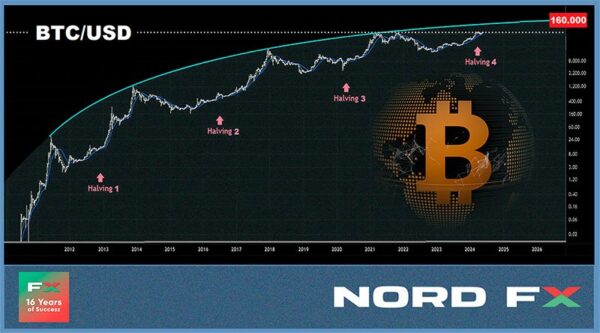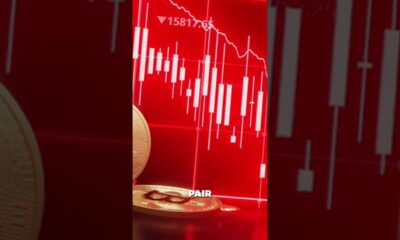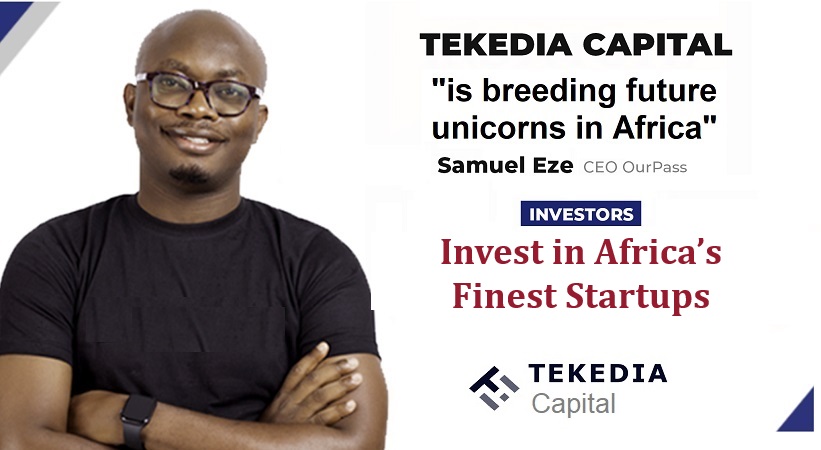News
Forex and Cryptocurrency Forecast – Action Forex

EUR/USD: Who Controls the Financial Market
It is clear that interest rates rule the markets, not only in terms of actual changes but also regarding expectations about the timing and magnitude of future changes. From spring 2022 to mid-2023, the focus was on raising rates; now, the expectation has shifted towards their reduction. Traders are still uncertain about the Federal Reserve’s decisions and timing, leading them to scrutinize macroeconomic statistics primarily for their impact on the likelihood of monetary policy easing by the regulator.
At the beginning of last week, the dollar was under pressure due to weak data on business activity (PMI) in the US manufacturing sector. On Monday, 3 June, the Institute for Supply Management (ISM) reported that manufacturing activity in the country decreased in May from 49.2 to 48.7 points (forecast 49.6). As the index remained in contraction territory (below 50), there was renewed speculation among traders and investors about a possible Fed rate cut in September.
The US currency received some support from business activity data in the services sector. This time, the PMI was 53.8 points, higher than both the previous value of 49.4 and the forecast of 50.8, which slightly pleased the dollar bulls.
Thursday, 6 June, was relatively calm. The European Central Bank’s Governing Council lowered the interest rate by 25 basis points (bps) to 4.25%, as expected. This step fully aligned with forecasts and was already factored into EUR/USD quotes. Notably, the ECB had not lowered rates since 2019, began raising them in July 2022, and kept them unchanged at the same level during the last five meetings. Since September 2023, inflation in the Eurozone has decreased by more than 2.5%, allowing the regulator to take this step for the first time in a long while.
The ECB’s statement following the meeting indicated that despite the rate cut, its monetary policy remains restrictive. The regulator forecasts that inflation will likely remain above the 2.0% target this year and next. Therefore, interest rates will remain at restrictive levels as long as necessary to achieve the inflation goal. The ECB raised its forecast for inflation, now expecting CPI to average 2.5% in 2024, 2.2% in 2025, and 1.9% in 2026м.
As mentioned, the ECB’s current decision was fully anticipated by the market, as predicted by all 82 economists surveyed by Reuters at the end of May. The more intriguing aspect is what will happen next. More than two-thirds of Reuters respondents (55 out of 82) believe that the ECB’s Governing Council will cut the rate twice more this year – in September and December. This figure has increased compared to the April survey, where just over half of the economists made such a prediction.
A local triumph for the dollar bulls occurred on Friday, 7 June, when the US Department of Labour report was released. The number of new jobs in the non-farm sector (NFP) was 272K in May, compared to the expected 185K. This result was significantly higher than the revised April figure of 165K. The data also showed a more substantial than expected increase in the average hourly earnings, an inflationary indicator, which grew by 0.4%, double the previous value of 0.2% and one and a half times higher than the forecast of 0.3%. The only slight negative was the unemployment rate, which unexpectedly rose from 3.9% to 4.0%. However, overall, this data benefited the dollar, and the EUR/USD pair, having bounced off the upper boundary of the 3.5-week sideways channel at 1.0900, ended the five-day period at its lower boundary of 1.0800.
Regarding the analysts’ forecast for the near future, as of the evening of 7 June, it is quite vague: 40% of experts voted for the pair’s growth, and an equal number (40%) for its fall, with the remaining 20% maintaining neutrality. Technical analysis also provides no clear guidance. Among trend indicators on D1, 25% are green and 75% are red. Among oscillators, 25% are green, 15% neutral-grey, and 60% red, though a third of them signal the pair is oversold. The nearest support levels are 1.0785, then 1.0725-1.0740, 1.0665-1.0680, and 1.0600-1.0620. Resistance zones are at 1.0865-1.0895, then 1.0925-1.0940, 1.0980-1.1010, 1.1050, and 1.1100-1.1140.
The upcoming week also promises to be quite interesting. The key day will be Wednesday, 12 June. On this day, consumer inflation (CPI) data for Germany and the United States will be released, followed by the FOMC (Federal Open Market Committee) meeting of the US Fed. It is expected that the regulator will keep the key interest rate unchanged at 5.50%. Therefore, market participants will be more focused on the FOMC’s Economic Projections Summary and the subsequent press conference by the Fed leadership. The next day, Thursday, 13 June, will see the release of US Producer Price Index (PPI) data and initial jobless claims numbers. At the end of the week, on Friday, 14 June, the Fed’s Monetary Policy Report will be available for review.
USD/JPY: Finance Minister Responds to Questions
A week ago, we wrote that Japanese financial authorities had not confirmed whether they conducted intensive yen purchases on 29 April and 1 May to support its exchange rate. Bloomberg estimated that around ¥9.4 trillion ($60 billion) might have been spent on these currency interventions, setting a new monthly record for such financial operations. We questioned the long-term or even medium-term effectiveness of this expenditure.
It seems that Japan’s Finance Minister, Shunichi Suzuki, read our review, as he hastened to provide answers to the questions posed. In his statement, he first confirmed that (quote): “the decline in Japan’s foreign reserves at the end of May partially reflects currency interventions.” This suggests that yen purchases indeed took place. Additionally, the minister noted, “the effectiveness of such interventions should be considered,” indicating his doubts about their feasibility.
Suzuki refrained from commenting on the size of the intervention funds but mentioned that while there is no limit on funds for currency interventions, their use would be limited.
As previously mentioned, besides interventions (and the fear of them), another way to support the national currency is through tightening the monetary policy of the Bank of Japan (BoJ). Early last week, yen received support from rumours that the BoJ is considering reducing the volume of its quantitative easing (QE) programme. Such a decision could decrease demand for Japanese government bonds (JGBs), increase their yields (which inversely correlates with prices), and positively impact the yen’s exchange rate. The Bank of Japan is expected to discuss reducing bond purchases at its meeting next Friday, 14 June.
On Tuesday, 4 June, BoJ Deputy Governor Ryozo Himino confirmed concerns that a weak yen could negatively impact the economy and cause inflation to rise. According to him, a low national currency rate increases the cost of imported goods and reduces consumption, as people delay purchases due to high prices. However, Ryozo Himino stated that the Bank of Japan would prefer inflation driven by wage growth, as this would lead to increased household spending and consumption.
The yen received another blow from the dollar after the publication of US labour market data on 7 June. The USD/JPY pair surged as wage growth in the US sharply contrasted with the 25th consecutive month of declining wages in Japan in April.
As the saying goes, hope dies last. Investors remain hopeful that the regulator will actively combat the yen’s depreciation, creating long-term factors for USD/JPY to decline. For now, it ended the week at 156.74.
The median forecast of analysts for the near term is as follows: 75% voted for the pair’s decline and yen strengthening ahead of the BoJ meeting, while the remaining 25% took a neutral stance. None favoured the pair’s upward movement. Technical analysis, however, presents a different picture: 100% of trend indicators on D1 are green. Among oscillators, 35% are green, 55% neutral-grey, and only 10% red. The nearest support level is around 156.00-156.25, followed by zones and levels at 155.45, 154.50-154.70, 153.10-153.60, 151.85-152.35, 150.80-151.00, 149.70-150.00, 148.40, and 147.30-147.60, with 146.50 being the furthest. The closest resistance is in the zone of 157.05-157.15, then 157.70-158.00, 158.60, and 160.00-160.20.
Noteworthy events in the coming week include Monday, 10 June, when Japan’s Q1 2024 GDP data will be released, and, of course, Friday, 14 June, when the Bank of Japan’s Governing Council will make decisions on future monetary policy. However, like the Fed, the yen interest rate is likely to remain unchanged.
CRYPTOCURRENCIES: What Drives and Will Drive Bitcoin Upwards
The launch of spot bitcoin ETFs in January caused an explosive price increase for the leading cryptocurrency. On 12 March, inflows into these funds reached $1 billion, and by 13 March, BTC/USD set a new all-time high, rising to $73,743. Then came a lull, followed by a post-halving correction, and finally, growth resumed in May. Early last week, net inflows into BTC-ETFs amounted to $887 million, the second largest in these funds’ history. As a result, BTC/USD broke the $70,000 level and recorded a local high at $71,922.
Young whales (holding over 1,000 BTC) demonstrated noticeable accumulation, adding $1 billion daily to their wallets. CryptoQuant’s head, Ki Young Ju, notes that their current behaviour resembles 2020. At that time, consolidation around $10,000 lasted about six months, after which the price increased 2.5 times in three months. Key representatives of these young whales include major institutional investors from the US, who accounted for a third of all capital inflows into spot BTC-ETFs in Q1 (about $4 billion) from companies with over $100 million in assets under management.
Besides BTC-ETFs, the recent growth was significantly influenced by April’s halving. The Hash Ribbons indicator is giving an “optimal signal” to buy digital gold in the coming weeks, indicating a resumption of the asset’s rally, according to Capriole Investments founder Charles Edwards. The metric shows miner capitulation that began two weeks ago. This period occurs when the 30-day moving average of the hash rate falls below the 60-day rate.
According to Edwards, miner capitulation happens roughly once a year, typically due to operational halts, bankruptcies, takeovers, or, as in this case, halving. The halving of the block reward makes equipment unprofitable, leading to its shutdown and hash rate decline. The last miner capitulation was in September 2023, when bitcoin traded around $25,000.
In the event of a new growth impulse, Edwards predicts the next medium-term target will be $100,000. However, he warns that summer traditionally sees a lull in financial markets, so the upward impulse might be delayed.
Wall Street legend and Factor LLC head Peter Brandt highlights the “remarkable symmetry” of market cycles, with halving halving the weeks between the bottom and the peak. If Brandt’s model is correct, BTC should reach a peak between $130,000-160,000 by September next year.
Venture investor Chamath Palihapitiya offers a much more optimistic forecast. Analysing bitcoin’s post-halving dynamics, he notes the cryptocurrency achieved its greatest growth 12-18 months after the event. Palihapitiya predicts that if the growth trajectory after the third halving is repeated, bitcoin’s price could reach $500,000 by October 2025. Using the average figures of the last two cycles, the target is $1.14 million.
For the coming weeks, analyst Rekt Capital believes digital gold will need to confidently overcome the $72,000-$73,000 resistance zone to enter a “parabolic growth phase.” Popular cryptocurrency expert Ali Martinez forecasts BTC will likely test the $79,600 price range. AI PricePredictions suggests that bitcoin could not only firmly establish above the critical $70,000 mark but also continue growing, reaching $75,245 by the end of June. This prediction is based on technical analysis indicators like the Relative Strength Index (RSI), Bollinger Bands (BB), and Moving Average Convergence Divergence (MACD).
Two catalysts could drive the upcoming growth of the crypto market: the launch of spot exchange-traded funds based on Ethereum after SEC approval of S-1 applications, and the US presidential elections. According to Bloomberg exchange analyst James Seyffart, the SEC might approve the applications by mid-June, although it could take “weeks or months.” JPMorgan experts believe the SEC’s decision on ETH-ETFs was politically motivated ahead of the US presidential elections. These elections themselves are the second catalyst for a bull rally.
A recent Harris Poll survey, sponsored by BTC-ETF issuer Grayscale, found that geopolitical tensions and inflation are prompting more American voters to consider bitcoin. The survey, which included over 1,700 potential US voters, revealed that 77% believe presidential candidates should at least have some understanding of cryptocurrencies. Additionally, 47% plan to include cryptocurrencies in their investment portfolios, up from 40% last year. Notably, 9% of elderly voters reported increased interest in bitcoin and other crypto assets following BTC-ETF approval. According to NYDIG, the total cryptocurrency community in the US currently numbers over 46 million citizens, or 22% of the adult population.
Evaluating this situation, Wences Casares, Argentine entrepreneur and CEO of venture company Xapo, believes the US could be one of the first to adopt a dual currency system. In this case, the dollar would be used for transactions with everyday goods and services, while cryptocurrency would be a store of value.
At the time of writing, the evening of Friday, 7 June, BTC/USD trades at $69,220. The total crypto market capitalisation stands at $2.54 trillion ($2.53 trillion a week ago). The Crypto Fear & Greed Index rose from 73 to 77 points over the week, moving from the Greed zone to the Extreme Greed zone.
In conclusion, the forecast for the next potential candidate for a spot ETF launch in the US after bitcoin and Ethereum. Galaxy Digital CEO Mike Novogratz believes it will be Solana, which showed impressive results over the past year. At the end of 2023, SOL was around $21 but exceeded $200 by March 2024, showing nearly tenfold growth. Currently, SOL is around $172 and ranks fifth in market capitalisation. Given Solana’s current position, Novogratz is confident this altcoin has a good chance of being included in the pool of spot ETFs. Recently, BKCM investment company CEO Brian Kelly expressed a similar view.
News
US Cryptocurrency Rules Delayed by ‘Never-Ending’ Lawsuits

Ripple CEO says cryptocurrency industry still seeking regulatory clarity from US
Speaking to Bloomberg News on Wednesday (July 17), Author: Brad Garlinghouse he said America is behind behind other countries which have already adopted cryptocurrency regulations.
“What we’re seeing, where it’s the UK, Japan, Singapore… even the European Union, more than two dozen countries have come together to provide a framework for cryptocurrency regulation,” Garlinghouse said.
“It’s frustrating that we as a country can’t get that regulatory framework in place. And instead, we have this never-ending lawsuit coming from the SEC that doesn’t really address the problem.”
Ripple has been the target of some of these legal disputes. Securities and Exchange Commission (SEC) sued the company in 2020, accusing it of conducting a $1.3 billion operation offering of unregistered securities tied to its XRP token.
However, last year a judge ruled that only Ripple’s institutional sales of XRP, not retail sales, violated the law, a decision widely seen as a victory for the cryptocurrency industry.
As PYMNTS noted at the time, that ruling has “far-reaching repercussions impact across the digital asset ecosystem, which has long maintained that its tokens do not represent securities contracts.”
However, Garlinghouse told Bloomberg on Wednesday that the company cannot wage multimillion-dollar legal battles over each token.
He spoke to the news agency from the Republican National Convention in Milwaukee, where the party is backing the candidacies of former President Donald Trump and Ohio Sen. J.D. Vance, both of whom are considered pro-cryptocurrency.
But Garlinghouse argued that cryptocurrencies “should not be a partisan issue,” and noted that he had recently attended a conference in Washington that included Democrats, including White House officials.
“I think they were there, listening to the industry… it was refreshing to start having that conversation,” she said.
President Joe Biden earlier this year he vetoed a measure which would have ended the SEC’s special rules for crypto-asset custodians. This legislation was supported by both the digital asset industry and the banking industry.
Ripple early this year donated $25 million to the cryptocurrency industry’s super PAC Fair Smoothiewith Garlinghouse stating at the time that such donations would continue every year, as long as the industry had its detractors.
Second Open SecretsWhich monitor spending For campaigns, the PAC has spent $13.4 million this year, much of it to help defeat Rep. Katie Porter’s (D-Calif.) U.S. Senate campaign.
News
The Future of Cybersecurity in the Cryptocurrency Industry

The cryptocurrency space has had a tumultuous journey, with its fair share of ups and downs. As we look to the future, one area that remains a constant focus is cybersecurity. The digital nature of cryptocurrencies makes them inherently vulnerable to cyber threats, and as the industry evolves, so does the landscape of potential risks.
In 2022, the cryptocurrency market faced significant challenges, with over $2 trillion in market value lost. This event served as a wake-up call for the industry, highlighting the need for robust cybersecurity measures. The future of cryptocurrency security is expected to see a shift towards more regulated and established institutions taking the reins of crypto technology and blockchain infrastructure.
The decentralized nature of cryptocurrencies offers numerous benefits, such as transparency and financial inclusion. However, it also introduces unique security challenges. The risk landscape is filled with threats such as hacking, phishing, ransomware attacks, malware, and social engineering. These threats not only lead to financial losses, but also damage the reputation and trust within the cryptocurrency ecosystem.
Mini-MBA Tekedia edition 15 ((September 9 – December 7, 2024) started recordings; Register today for discounts reserved for early bird customers.
Tekedia AI in Business Masterclass Opens registrations Here.
Join the Tekedia Capital Syndicate and IInvest in Africa’s best startups Here.
The decentralized nature of cryptocurrencies offers many benefits, but it also presents unique security challenges. Cyber risks such as hacking, phishing, and ransomware pose threats to the integrity of digital assets. The infrastructure that supports cryptocurrencies is not immune to vulnerabilities, including smart contract flaws and exchange hacks.
To address these vulnerabilities, the infrastructure that supports cryptocurrencies must be strengthened. Smart contract vulnerabilities, exchange hacks, wallet breaches, and flaws in the underlying blockchain technology are significant concerns that must be addressed to ensure the security and integrity of digital assets.
As cybercriminal tactics and techniques become more sophisticated, the cryptocurrency industry must stay ahead of the curve. The future will likely see more targeted attacks, exploiting weaknesses in infrastructure, networks, and human factors. This requires a proactive and multifaceted approach to cybersecurity.
To mitigate these risks, several measures must be adopted:
Strengthening security measures: Developers, exchanges, and wallet providers must improve security protocols, use strong encryption, implement multi-factor authentication, and conduct regular security audits.
Education and awareness: Users should be educated on best practices for protecting their digital assets, including using strong passwords, recognizing phishing attempts, and using hardware wallets for secure storage.
Looking ahead, the cryptocurrency industry is expected to see an increased focus on robust security measures. Blockchain projects and exchanges are likely to invest in advanced encryption techniques and decentralized storage solutions to protect user assets. The future impact of cyber risk on cryptocurrencies will depend on the collective efforts of stakeholders to address vulnerabilities and strengthen security measures.
Collective efforts by stakeholders in the cryptocurrency space are crucial to address vulnerabilities and strengthen security measures. While challenges persist, advances in cybersecurity technologies and practices offer hope for a more secure and resilient cryptocurrency ecosystem.
The future of cybersecurity in the cryptocurrency industry depends on finding a balance between innovation and regulation. It requires a collaborative effort from all parties involved, from developers to end users, to create a secure environment that fosters trust and growth in the industry. As we move forward, it is critical that lessons learned from past events guide the development of stronger security measures, ensuring the longevity and stability of cryptocurrencies as a vital part of the modern economic toolkit.
Like this:
Like Loading…
News
Bullish XRP and RLBK price predictions rise, outpacing the broader cryptocurrency market, prompting Shiba Inu holders to switch!

Bitcoin’s one-week surge from $60,000 has pushed other cryptocurrencies into an uptrend. However, for many altcoins, this trend has been temporary. Altcoins such as XRP and Shiba Inu (SHIB) have experienced price drops. However, Rollblock, a new altcoin on the Ethereum blockchain, has thrived during this period, attracting thousands of investors looking for long-term growth.
XRP’s Nearly 30% Growth Over Last Week Drops as Selling Pressure Increases
XRP is seeing further price decline as Ripple investors withdraw their profits from the token. The surge in XRP’s price to $0.64 in the past week has provided investors with a perfect opportunity to increase their returns in the short term. With the ongoing sell-off in XRP, XRP has jumped over 8% in the past day and is now trading at $0.59. However, analysts tracking XRP indicators predict that XRP could still extend its gains by over 30% in the coming weeks.
Shiba Inu (SHIB) marks its third consecutive day of losses
Shiba Inu (SHIB) is in a period of adjustment after a week of strong gains. In the last 24 hours, SHIB has seen a jump of over 7%, reflecting a natural market fluctuation. Analysts are observing a death cross on the Shiba Inu chart, which historically signals the potential for future opportunities as the market stabilizes. As investors explore new possibilities, some are diversifying into promising altcoins like Rollblock (RBLK) to strategically rebalance their portfolios and capitalize on the emerging trend.
Rollblock (RBLK) Up Another 7% as New Investors Join Pre-Sale
Rollblock (RBLK) has taken the cryptocurrency market by storm, having attracted investors from more popular altcoins like Shiba Inu (SHIB) and XRP. Rollblock’s growth is attributed to its utility in the $450 billion global gaming industry.
Rollblock aims to use blockchain technology to bridge the gap between centralized and decentralized gambling. With blockchain technology, Rollblock secures every transaction in its online casino, providing transparency and convenience to millions of players who are uncomfortable placing bets on other iGaming platforms.
This innovative use of blockchain technology in the industry has grown Rollblock to over 4,000 new users in less than two months. With plans to add sports betting, this number is expected to grow exponentially in Q3.
Rollblock uses a revenue sharing model that splits up to 30% of its casino’s weekly profits with token holders. This happens after Rollblock buys back $RBLK from the open market and uses half of it for rewards. The other half is burned to increase the price of $RBLK.
Rollblock price has seen four increases in the past month with $RBLK tokens now selling for $0.017. Analysts predict that at the current growth rate, Rollblock could increase by over 800% before the presale ends. For investors looking for a long-term token with growth potential, phase four is the best time to buy Rollblock before its price skyrockets!
Discover the exciting Rollblock (RBLK) pre-sale opportunities now!
Website:https://Rollblockpresale.io/
Social: https://linktr.ee/Rollblockcasino
No spam, no lies, just insights. You can unsubscribe at any time.
News
Texas Crypto Miners Turn to AI as Crypto Declines

As cryptocurrency mining becomes less profitable, Texas cryptocurrency mining companies are switching to supporting artificial intelligence companies.
Bitcoin miners, with their sprawling data centers and access to significant energy resources, are ideally suited for computationally intensive AI operations, and as cryptocurrency mining becomes less profitable, companies see this shift as a logical answer to their problems.
On Thursday, Houston-based Lancium and Denver-based Crusoe Energy Systems announced a multibillion-dollar deal to build a 200-megawatt data center near the West Texas city of Abilene to support advanced artificial intelligence applications such as medical research and aircraft design, CNBC reported. The plant represents the first phase of a larger 1.2 gigawatt project.
Lancium and Crusoe’s move into AI mirrors a broader trend among bitcoin miners. The combined market capitalization of the top U.S.-listed bitcoin miners hit a record $22.8 billion in June. Companies like Bit Digital and Hut 8 are diversifying into AI, with Bit Digital securing a $92 million annual revenue deal to supply Nvidia GPUs and Hut 8 raising $150 million to expand its AI data center.
But the growing popularity of these operations also presents challenges, particularly for the Texas power grid. Last month, the Electric Reliability Council of Texas announced that the state is expected to nearly double its energy production by 2030 to meet the high energy demands of data centers and cryptocurrency operations.
Lieutenant Governor Dan Patrick expressed concern about the projections.
“Cryptocurrency miners and data centers will account for more than 50% of the additional growth. We need to take a close look at these two sectors,” He wrote on Twitter/X. “They produce very few jobs compared to the incredible demands they place on our network. Cryptocurrency miners could actually make more money selling electricity to the network than they do from their cryptocurrency mining operations.”
Analysts predict significant growth in data center power capacity, which is expected to account for up to 9% of U.S. electricity consumption by 2030.
The operations also pose challenges for nearby cities. Earlier this month, TIME reported that a crypto-mining facility was seriously compromising the health of residents in the city of Granbury. TIME reported more than 40 people with serious health problems, including cardiovascular disease, high blood pressure and hearing loss. At least 10 of the residents needed to go to the emergency room or an urgent care facility.
The disturbances were caused by the extreme noise generated by the crypto-mining facility’s fans, which are used to keep the machines cool. While the proposed data center in Abilene would use liquid cooling systems, it’s still unclear whether the facility’s operations would pose a health risk to local residents.
-

 Nfts1 year ago
Nfts1 year agoShardLab Launches ZK-Based Tool for Digital Identity and NFT Vouchers
-

 News1 year ago
News1 year agoWallet recovery firms are abuzz as stranded cryptocurrency investors panic in the bitcoin boom
-

 Bitcoin1 year ago
Bitcoin1 year agoBitcoin, Ethereum, Solana and Cryptocurrency Markets Look Ready to ‘Send’ as Stars Align, According to Investor Chris Burniske
-

 Altcoins1 year ago
Altcoins1 year agoThree Altcoins Poised for Significant Growth in 2024: ETFS, OP, BLAST
-

 Altcoins1 year ago
Altcoins1 year agoAccumulate these altcoins now for maximum gains
-

 Nfts1 year ago
Nfts1 year agoOG Crypto Artist Trevor Jones Unveils Groundbreaking Collection of Ordinals | NFT CULTURE | NFT News | Web3 Culture
-

 Bitcoin1 year ago
Bitcoin1 year agoBillionaires are selling Nvidia stock and buying an index fund that could rise as much as 5,655%, according to some Wall Street analysts
-

 Videos9 months ago
Videos9 months agoKamala just won the boner! [Bad For Crypto]
-

 Videos1 year ago
Videos1 year agoLIVE FOMC 🚨 Could be CATASTROPHIC for Altcoins!
-

 News1 year ago
News1 year agoA Guide for Newcomers & Beginners – Forbes Advisor
-

 Videos1 year ago
Videos1 year agoAttention: a historically significant BITCOIN signal has just appeared!
-

 Videos1 year ago
Videos1 year agoSTOCK MARKET FUD! ⚠️ [Why This Is GREAT For Bitcoin Traders!]
















